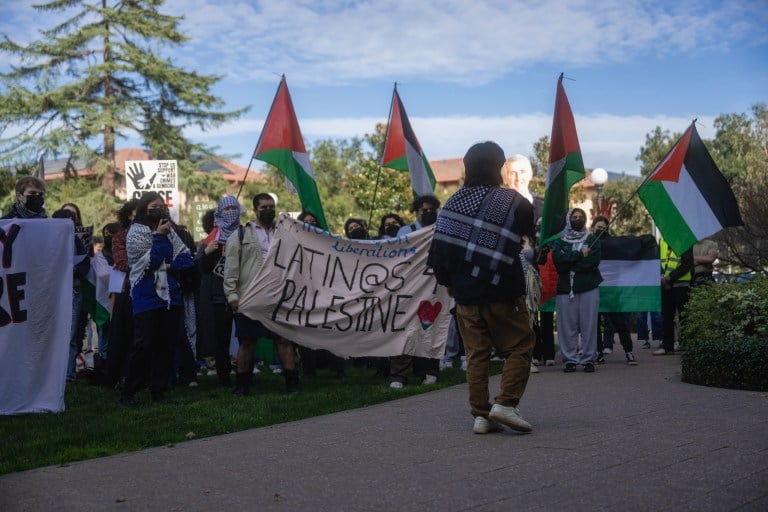Attendees of the seventh reunion of the April Third Movement (A3M), an anti-war movement from the Vietnam War era, connected with current pro-Palestine and climate student activists during this year’s events. The reunion, which took place from May 3 to May 4, consisted of approximately 60 in-person attendees and approximately 20 online attendees, the majority of whom were affiliated with Stanford as students, alumni, staff or spouses.
A3M was a movement formed in opposition to the Vietnam War, which began on April 3, 1969, when demonstrators organized a nine-day sit-in at the Applied Electronics Laboratory, occupied Encina Hall and blockaded the Stanford Research Institute’s offices in the Stanford Industrial Park. Over the following years, members of A3M took action through organized boycotts, peaceful picketing and acts of civil disobedience. The movement overlapped with movements surrounding civil rights and Third World liberation, women’s liberation, gay rights, anti-imperialism and university reform, among others, according to its website.
In later years, A3M members would become journalists, lawyers, professors, organizers and government officials — convening for reunions every five to 10 years.
Lenny Siegel, a former leader of A3M who attended Stanford in the late 1960s but didn’t earn a degree due to being suspended “for on-campus anti-war activities” according to his website, was the event’s primary organizer. Describing the significance of the A3M movement, Siegel said that this year’s reunion held particular importance.
“This year was special, because we were able to connect with and support current student activists — particularly those fighting climate change and genocide in Gaza,” Siegel wrote in an email to The Daily.
The reunion featured a screening of the film “Radical Reunion,” which included footage of the A3M 2019 reunion and excerpts from the attendees, discussions about the topics of climate change, divestment and the future of Stanford and a performance of the anti-imperialist play “Alice in ROTC-Land.” The reunion also included a walking tour of campus activism, during which attendees met with students from the pro-Palestine encampment.
Georgia Kelly became involved in the A3M movement when she was working as an employee of the Stanford Research Institute during the 1960s. Kelly has since stayed in contact with members of the movement and has been attending the A3M reunions since 2009.
“We keep reading. We keep having discussions — it keeps our minds alive,” Kelly said. “That’s what these reunions remind us of… that it’s still exciting.”
Dave Ransom M.A. ’66 became involved with the A3M movement when he was a graduate student in English at Stanford. Ransom recounted skipping class on April 3, 1969, to attend the nine-day sit-in. Like many attendees, Ransom said that his experience as a student demonstrator in the 1960s has shaped his perspective on student demonstrators today.
“These reunions are a way for us to touch base as we get older to find out what’s happening with our generation of activists,” Ransom said. “And one of the things that I think we concluded today was that now we’re elders and we need to pass on our knowledge or wisdom.”
Amid the current backdrop of nationwide student demonstrations, the A3M reunion reminded students that university campuses have historically been, and continue to be, battlegrounds for political and social issues.
“Attending Stanford was a great learning experience for us, but it wasn’t just what we learned in the classroom,” Siegel wrote.
A previous version of this article misrepresented the year the A3M first occurred — the movement started in 1969, not in 1965. The Daily regrets this error
